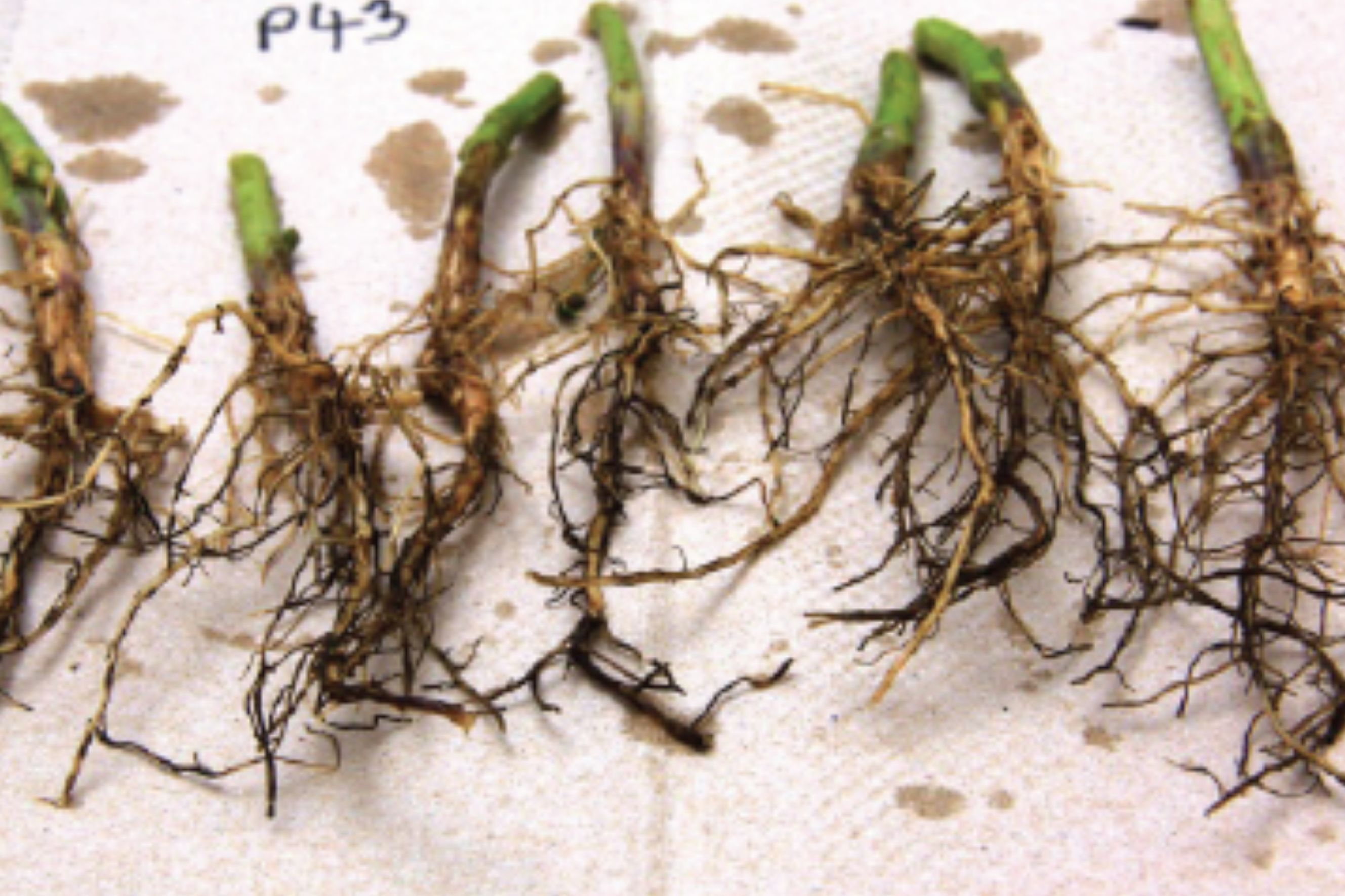Phytoptora Root, Stem, and Crown Rots
 Phytoptora Root Rot on Soybeans
Phytoptora Root Rot on Soybeans
(Anette Phibbs, DATCP)
 Phytoptora Crown Rot on Zucchinni
Phytoptora Crown Rot on Zucchinni
(Paret, University of Florida Extension)
HOSTS
- Solanaceous Crops
- Cucurbits
- Legumes
BIOLOGY
Phytophtora root, stem, and crown rots are caused by various Phytophthora species. It is a concern throughout the growing season.
Phytophthora organisms thrive, grow, reproduce, and infect plant roots in, water, saturated soil, and along river banks and ponds. Soil-inhabiting pathogens survive as resting spores in the soil for years when there are no suitable hosts.
Water in soil pores and root exudates from plant host nearby allow resting spores to germinate phytophthora organisms thrive, grow, reproduce, and infect plant roots in, water, saturated soil, and along river banks and ponds.
Soil-inhabiting pathogens survive as resting spores in the soil for years when there are no suitable hosts. Water in soil pores and root exudates from plant host nearby allow resting spores to germinate.
SYMPTOMS
This disease is favored primarily by wet soil but can be favored by warm temperatures as well. Early infections cause seeds or seedlings to appear bruised, soft, rotted, yellow, brown, and plants can wilt and die. Mid or late season infections cause chocolate-brown lesions on roots and sometimes stems, yellowing leaves, wilting, and plant death in patches or sections of rows.
GENERAL MANAGEMENT
This disease is sporadic in Utah and is promoted primarily by wet soil. Warm temperatures may also promote this disease. It is a concern throughout the growing season.
- Watch for symptoms starting early in the season.
- Watch for poorly draining soil throughout the growing season.
- Provide good soil drainage and water management to prevent standing water.
- Rotate crops.
- Avoid planting susceptible crops in soil infested with Phytophthora.
- Use resistant varieties when available.

